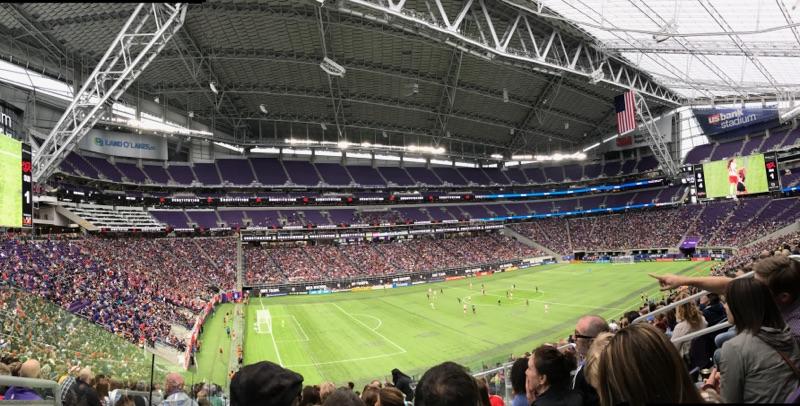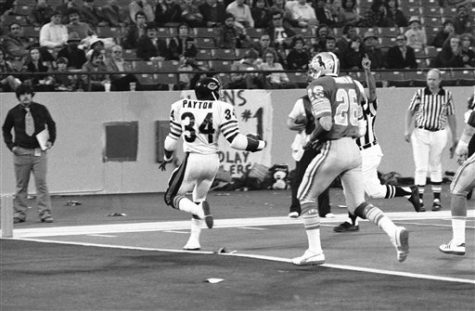Equal Pay For Equal Play
Around 20,000 fans came to watch the US Women’s National Team play Switzerland at the US Bank Stadium.
In the newly built U.S. Bank stadium, an astonishing 5-1 win over Switzerland in a friendly match was the highlight of many Minnesotans’ weekend, especially young aspiring girl soccer players. In terms of money, though, what does this win mean?
One of the most recent sports debates is equal pay among men and women players. You don’t need to look any farther than the U.S. women’s national soccer team for evidence.
Carli Lloyd, who scored a hat-trick in the 2012 Summer Olympics, said in an interview on the Today show, “It’s about time for equal pay; we have proven our worth.”
The women’s team works just as hard as the men’s team; they endure the same physical and emotional pain, and have just as much passion for the game. So why is the pay difference between men and women so significant?
Women soccer players make about $37,800 per year while on the roster. Men, on the other hand, make between $100,000-$300,000 per player per year
The women’s National Team were three-time Olympic champions and overall have been more successful than the men’s team in recent years. The pay difference just doesn’t add up.
According to the Today show, the men have cost the U.S. Soccer Association two million dollars in the last year, while the women have raked in 16+ million dollars. The hard earned money made by the women’s team has benefited the men through the association more than the women.
Soccer player Alex Morgan wrote on her Instagram feed, “This is not only about equal pay…but also equal treatment.” By this, Morgan refers to men getting to play on grass-only fields (not dangerous turf fields) and safer travel accommodations.
She also states, “We decided to do this for all of the little girls across the country and around the world who deserve to have a voice, and if we don’t leverage the voice we have, we are letting them down.”
This problem doesn’t only pertain to US soccer; there are examples involving other sports such as basketball. For a WNBA player in the 2015 season, salaries ranged between $38,913-$109,500. For men in the NBA, salaries start at $525,093 and reach up to $16.4 million.
Some may say that men deserve to be paid higher because they attract more fans and companies pay more for advertisements.
However, take the Minnesota Lynx and Timberwolves. The Timberwolves have never won a basketball championship, while the Lynx have won 3 in the past 5 years (2011, 2013, 2015). The highest paid women on the Lynx (Maya Moore) makes $120,000 a year. The highest paid Timberwolf (Ricky Rubio) makes an annual $13,400,000 a year. That is a significant difference between two teams who are vastly different in success.
Whether or not more fans show up or how much companies pay for commercials, men and women should be treated and paid fairly for how much work, dedication, and ultimately how successful they are.








